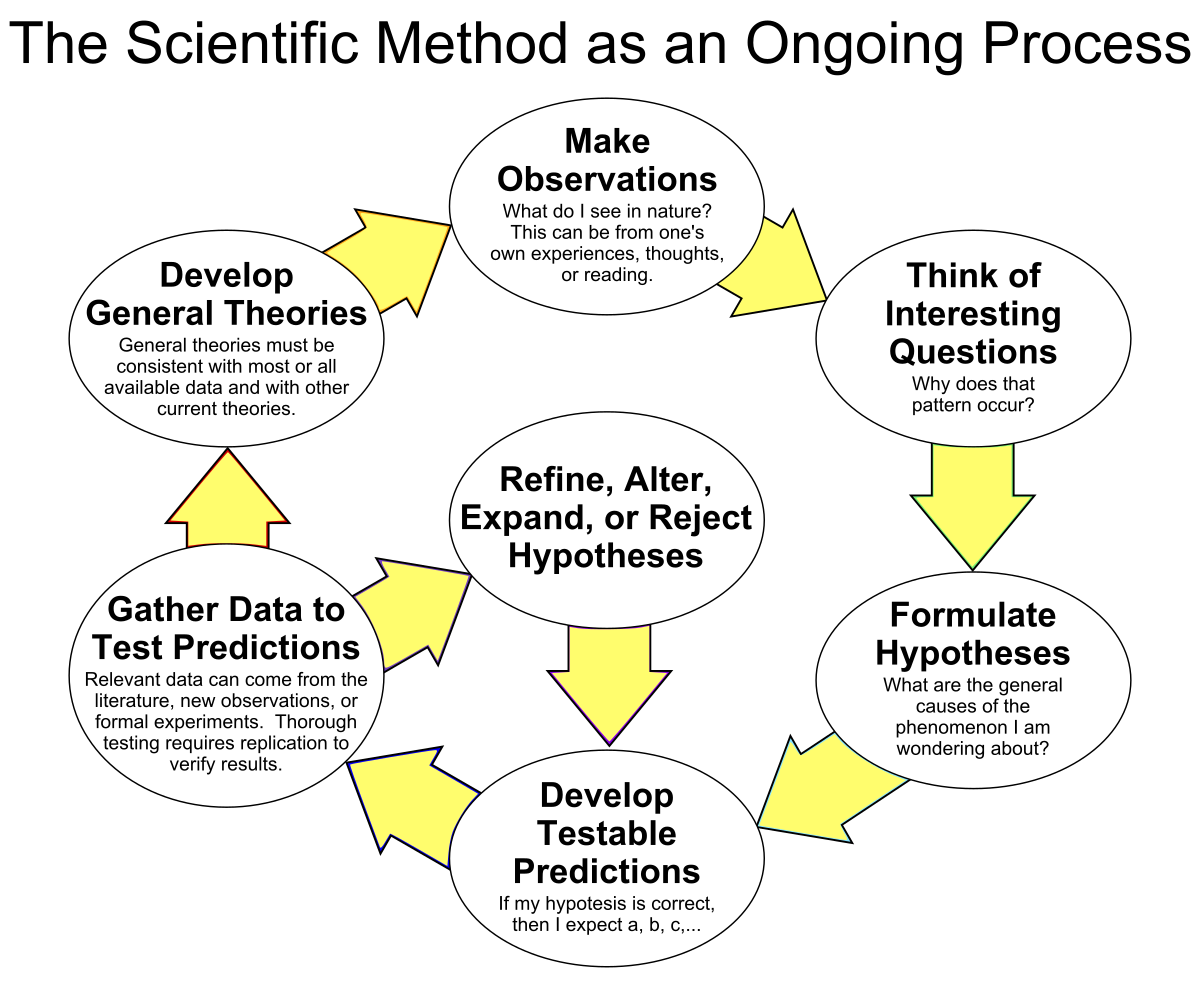The Scientific Method

Recognizing that personal and cultural beliefs influence both our perceptions and our interpretations of natural phenomena, we aim through the use of standard procedures and criteria to minimize those influences when developing a theory. As a famous scientist once said,
"Smart people (like smart lawyers) can come up with very good explanations for mistaken points of view."In summary, the scientific method attempts to minimize the influence of bias or prejudice in the experimenter when testing an hypothesis or a theory.
- Observation and description of a phenomenon or group of phenomena.
- Formulation of an hypothesis to explain the phenomena.
- Use of the hypothesis to predict the existence of other phenomena, or to predict quantitatively the results of new observations.
- Performance of experimental tests of the predictions by several independent experimenters and properly performed experiments.
If the experiments bear out the hypothesis it may come to be regarded as a theory or law of nature. If the experiments do not bear out the hypothesis, it must be rejected or modified. What is key in the description of the scientific method is the predictive power (the ability to get more out of the theory than you put in) of the hypothesis or theory, as tested by experiment. It is often said in science that theories can never be proved, only disproved. There is always the possibility that a new observation or a new experiment will conflict with a long-standing theory.